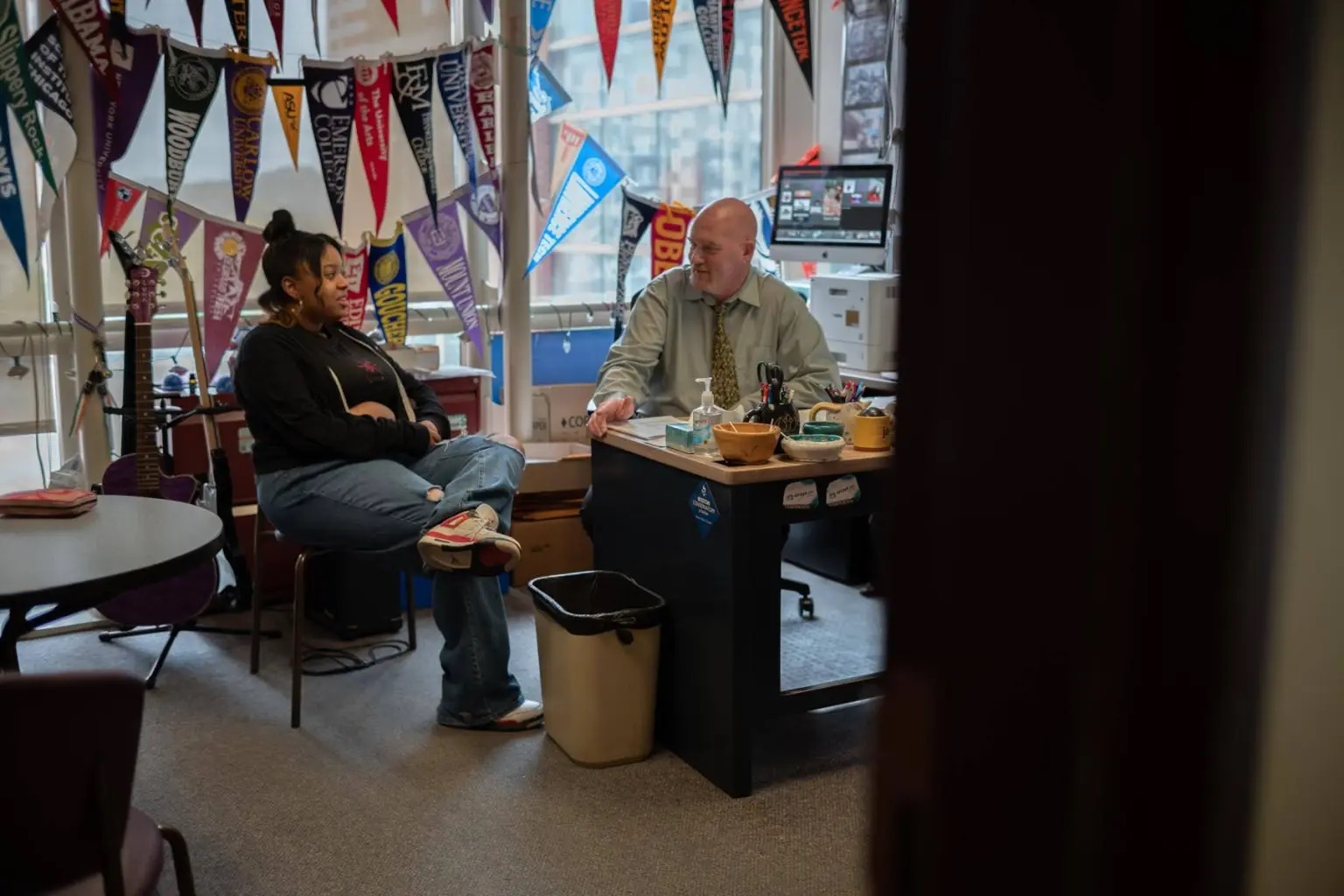Layla Johnson and counselor Brendan Coyne in his office at Pittsburgh Creative and Performing Arts 6-12 on May 6th, 2024. (Photo by Benjamin Brady/Public Source)
A revamped financial aid application process was supposed to smoothen the college enrollment process. A glitchy rollout this year has instead left many in the dark about their funding options.
by Emma Foltz, PublicSource
After graduating from Pittsburgh Public Schools this spring, senior Layla Johnson plans to become the first in her family to attend college. She’s already committed to Howard University, a historically Black research university, but she did so before receiving the financial aid offer that would tell her how much she’ll need to pay to attend.
Johnson was only beginning to receive aid offers from other colleges as of early May, she said at the time, and felt she was “running out of time” to decide where to enroll based on her financial needs. In the middle of that uncertainty, she knew she really liked Howard, so she put down a deposit to reserve her spot in the incoming class.
She was “kind of OK” with the estimated net price that a calculator on the university’s website gave her. But, “I’m also feeling like I really need my financial aid packet — like, now.”
In a normal school year, Johnson and thousands of other students across the country would have had several more weeks to consider their aid offers, which can reduce their tuition costs by thousands of dollars, before committing to a college. Put differently, they would have had several more weeks to weigh their college dreams against tuition costs that can spell years of burdensome debt.
It’s not too late to submit a FAFSA for the fall
The form is due as early as June 1, 2024, midnight Central time, according to the U.S. Department of Education.
For first-time applicants enrolled in a community college, business school, trade or technical school, hospital school of nursing, designated Pennsylvania open-admission institution, or nontransferable two-year program, the form is due by Aug. 1, 2024, midnight Central time.
The revised Free Application for Federal Student Aid, or FAFSA, is supposed to simplify the process for receiving financial aid, but its rollout this school year has been plagued by delays and errors. At the end of April, 36% of Pennsylvania’s high school seniors had completed the form, roughly 55,400 people, according to the National College Attainment Network. That’s about 15,000 fewer students than last school year.
The crisis has frustrated high school counselors, challenged college administrators and stressed students, especially those from low-income families who are pinning their hopes on financial aid. Some students may choose pricier options because they lack their other aid offers, and others may not attend at all this fall, advocates for college access say. Studies have shown that students who delay enrollment are less likely to earn a degree in the future.
In turn, the advocates say universities may see their enrollment numbers decline, sending financial shocks through the many institutions that depend on tuition revenue. Enrollment figures are still in flux at many schools. Colleges typically ask new students to commit and make deposits by May 1, but hundreds have pushed back their deadlines this year to May 15 or June 1.
Read entire story here
